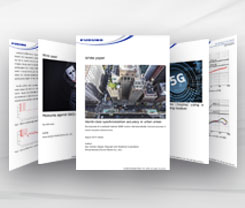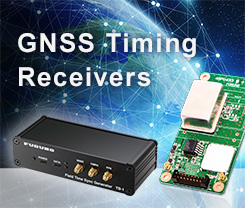Column
The Observation Network Created by the Earthquake Proves Useful for Accurate Timekeeping (Part Two of Two)
- A Solution to the "Mr. Higgins Problem" in Space -
Is your clock showing the correct time?
Have you ever had that chilling moment when you noticed the clock you glanced at while getting ready in the morning was significantly behind the others? Are all the wall and desk clocks in your home ticking in sync? Each clock may run fast or slow at different rates, and keeping them all perfectly synchronized—especially with varying battery replacement times—is quite a challenge.
If you visit the clock section in an electronics store, you'll see clocks showing different times. The exception is radio-controlled clocks. Those clocks, which receive JJY (Japan Standard Time radio signal) broadcast by NICT from Fukushima and Saga should show perfectly synchronized movements down to the second hand.
In the world of GNSS, atomic clocks onboard satellites are synchronized with master clocks at control centers, ticking in unison. This is the fundamental premise of satellite positioning. However, the idea that "each positioning satellite automatically adjusts its time like a radio-controlled clock based on commands from the control center" is an oversimplification.
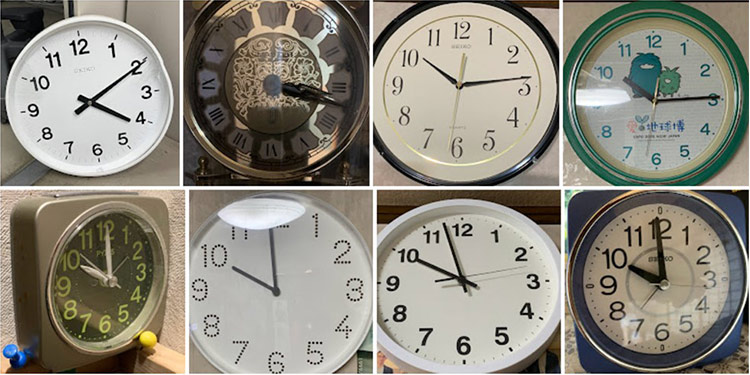 From an analog clock in the author's possession
From an analog clock in the author's possession
The Challenge of Synchronizing Clocks — The Case of Mr. Higgins in the UK
 Source: "Clocks and more Clocks" (Authored by Pat Hutchins / Translated by Nobuhiko Tanaka, Published by Horupu Publishing, First edition in 1976, Reprinted edition in 2006)
Source: "Clocks and more Clocks" (Authored by Pat Hutchins / Translated by Nobuhiko Tanaka, Published by Horupu Publishing, First edition in 1976, Reprinted edition in 2006)
Let me introduce a perfect story that illustrates the difficulty of synchronizing the clocks of orbiting positioning satellites. It's one of the most famous works by British picture book author Pat Hutchins, titled Clocks and More Clocks.
In the story, Mr. Higgins found an old clock in his attic. It worked fine. And at first, he was pleased. But soon, he began to worry whether it was showing the correct time. He bought a new clock and placed it in the downstairs bedroom to compare, but the times were slightly different. So, he placed new clocks in the kitchen, the hallway, and other rooms. Each time he checked them, they all showed slightly different times. Mr. Higgins became quite confused... and that's the story.
A Perfect Metaphor for Satellite Time Synchronization
The many clocks Mr. Higgins placed in different rooms can be likened to satellites orbiting the Earth. The distance to satellites is far beyond our everyday sense of scale, and the time intervals involved are much smaller, requiring special consideration for synchronization*. One key factor is "propagation delay"—similar to the time it takes Mr. Higgins to walk up the stairs to check another clock.
To accurately determine propagation time, you must know the exact distance (position). For that, you need precise orbital data and accurate time. But to obtain those, you again need accurate distance information to the satellite. As you can see, it's a circular problem.
If you're not careful, you might end up calculating distance based on a clock whose accuracy is uncertain, and then use that distance to synchronize time—falling into the same dilemma as Mr. Higgins.
To avoid this, a different perspective and tools are needed. In the picture book, it was the watchmaker's pocket watch that solved the problem. In satellite positioning, the solution comes from "GNSS continuous observation stations" placed around the Earth—also known as electronic reference points, as introduced in Part 1.
* Here, we've simplified the explanation by using the term "time synchronization," but in reality, each satellite's clock error is estimated and managed accordingly.
The Solution: "Electronic Reference Points"
Originally, satellite positioning is based on receiving signals from multiple (at least four) satellites and analyzing them to determine one’s own position and time. By reversing this process—collecting and analyzing data from numerous observation stations on Earth—we can accurately determine the satellite’s three-dimensional position and time.
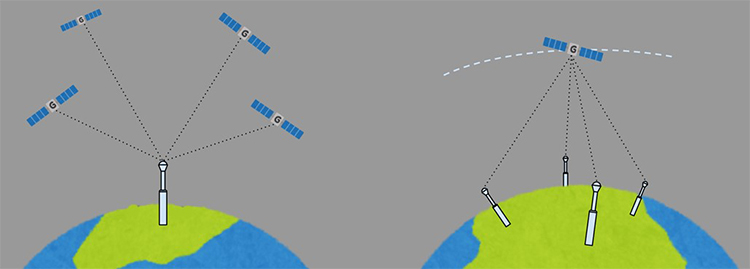 Basic principles of satellite positioning (left) and the concept of satellite orbit estimation (right). In practice, in addition to positioning signals, a method called SLR (Satellite Laser Ranging) is also used, which estimates the distance between the ground and the satellite based on the round-trip time of laser light.
Basic principles of satellite positioning (left) and the concept of satellite orbit estimation (right). In practice, in addition to positioning signals, a method called SLR (Satellite Laser Ranging) is also used, which estimates the distance between the ground and the satellite based on the round-trip time of laser light.
Japan’s GNSS, the Quasi-Zenith Satellite System "Michibiki", operates with eight control stations: a main station in Ibaraki, a substation in Kobe, and six tracking control stations. In addition, 13 domestic and 23 overseas monitoring stations (GNSS continuous observation stations) are deployed to continuously monitor positioning signals. A document called the Performance Standard (PS) publicly states the guaranteed accuracy, indicating that the error in distance to the satellite is "±2.6 meters > 95%."
(Reference: https://www.soumu.go.jp/main_content/000800171.pdf)
What Can Be Done Using "Electronic Reference Points" Around the World
Similarly, GPS also publishes accuracy figures within a few meters as a kind of "promise" to users. Of course, efforts to improve accuracy continue daily. On the other hand, if we look at the actual past orbits of satellites, the accuracy can be even higher. This is where the globally distributed "electronic reference points" (or GNSS continuous observations) come into play. An organization called IGS (International GNSS Service) serves as a platform for these reference points operated by national agencies around the world, collecting and integrating observation data.
 Source: IGS (International GNSS Service)
Source: IGS (International GNSS Service)
https://igs.org/network-resources/
Over 500 observation points that have been stably operated are registered, and 13 independent organizations—including national agencies and universities from various countries—analyze the data using their own methods to estimate satellite orbits. Japan joined this initiative in 2023, with JAXA and the Geospatial Information Authority of Japan collaborating on the analysis.
These results are averaged with weighted values, and the final satellite orbit data is published about two weeks later. The accuracy of this data, known as the IGS Final Ephemeris, is ±2.5 cm. That means the distance to satellites flying about 20,000 km above the Earth is determined with an error of less than 2.5 cm.
Such high-precision orbital data not only serves as a foundation for geodesy and various academic research fields, but also plays an essential role in expanding human activity to the Moon and beyond.
Interpreting this level of accuracy from the perspective of "time synchronization," GNSS already has the potential to provide precise time across the entire globe at the picosecond level. Mr. Higgins would no longer have any trouble.
I would like to introduce how this highly accurate time synchronization infrastructure is being utilized and applied in various fields in a future article.
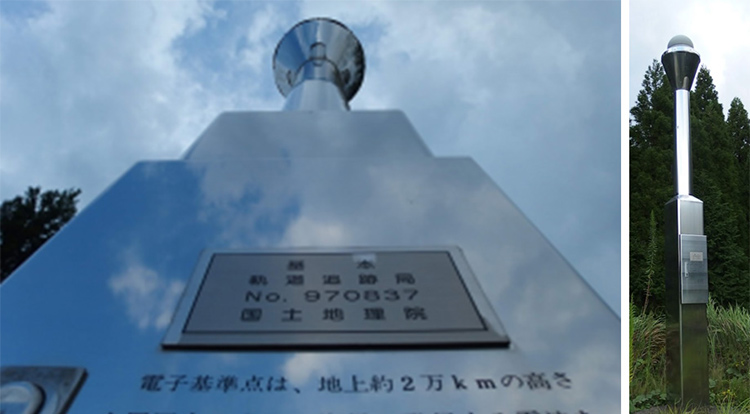 Photo: The electronic reference point "Aira: 970837" belongs to the category of “orbit tracking stations,” which once had a VLBI antenna installed. It is also operated as an IGS observation point (AIRA00JPN), and its radome shape differs slightly from other electronic reference points.
Photo: The electronic reference point "Aira: 970837" belongs to the category of “orbit tracking stations,” which once had a VLBI antenna installed. It is also operated as an IGS observation point (AIRA00JPN), and its radome shape differs slightly from other electronic reference points.
Writer introduction
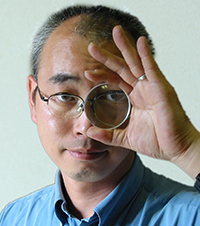
Mr. Mitsunari Kita Science and technology writer
Born in Ishikawa Prefecture in 1964. Based on his experience in covering industrial technology, cutting-edge technology, and space development, he is passionate about unraveling and conveying difficult topics in an interesting way to people of all ages, from children to senior citizens. From 2009 to 2014, he was a member of the editorial board of "JAXA's," the official magazine of the Japan Aerospace Exploration Agency. Author and co-author of the following books: 『あなたにもミエル化? ~世間のなりたちを工学の視点から~』(幻冬舎mc)、『私たちの「はやぶさ」その時管制室で、彼らは何を思い、どう動いたか』(毎日新聞社)、『東京大学第二工学部70周年記念誌 工学の曙を支えた技術者達』(東京大学生産技術研究所) etc.,
* All registered trademarks used herein are the property of their respective owners.
Pick up
Column
FURUNO Column
-
Common Problems That Affect GPS/GNSS Time Synchronization

-
How to select GPS/GNSS antennas for time synchronization

Column by Mr. Mitsunari Kita (Science and technology writer)
-
The Observation Network Created by the Earthquake Proves Useful for Accurate Timekeeping (Part Two of Two) - A Solution to the "Mr. Higgins Problem" in Space -

-
The Observation Network Created by the Earthquake Proves Useful for Accurate Timekeeping (Part One of Two)

-
FURUNO ELECTRIC Joins Experts From Around the World on a Norwegian Island for Jammertest 2024

-
Unraveling the Mysteries of Venus Based on "Occultation"

-
Atoms as the Basis for Measuring Both Fleeting Moments and Near-Eternities

-
Time Progressing with a Speed Difference of Just 4.4647 Ten-Billionths!

-
Critters Who Revitalize Forests Through the Spreading of Food Caches

-
Small But Significant Variances in Gravity and Time (Part Two of Two)

-
Small But Significant Variances in Gravity and Time (Part One of Two)

-
Why the GT-100 Time-synchronization GNSS Receiver Module is Like Fragrant Soup Curry

-
What Rainbows Can Teach Us About Dual-Band GNSS

-
The Amazing Things That Are Possible With Just a Clock

-
When Subterranean Earth Meets Outer Space

-
Using the TB-1 and GT-100 at a "Multipath Dojo" in the Major Metropolis of Osaka

-
The Disaster-struck Field Time Sync Generator TB-1: True Performance Revealed Through a Lightning Strike

-
Knowing the "Now" of Our Earth Through GNSS

-
The Reason GPS Counts Time in 1.5-second Intervals

-
Similarities Between "On My Count!," the 117 Notification System, and GPS

-
Reliable Clocks Help Us Find a Silver of the Clouds

-
Why Time Synchronization is Vital for Criminal Investigations, Seismograph Measurements and Solar Wind Observation

-
What Was "Cesium" About Cesium Akina?

-
Updating Analog Broadcasting with GNSS Time Synchronization Technology

-
The Long History of One Second (Part II)

-
The Long History of One Second (Part I)

-
A Solo Journey - Three-liter Microsatellite Mission Support via GPS (GNSS) and Satellite Communication -

-
A Solo Journey - The GPS (GNSS) Tracking System That Helped Kenichi Horie Cross the Pacific -

-
The Day After a Superflare - Effects on power and wireless communication infrastructures -




